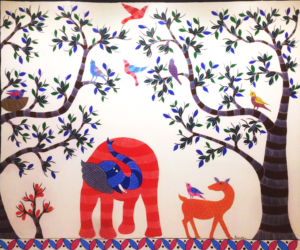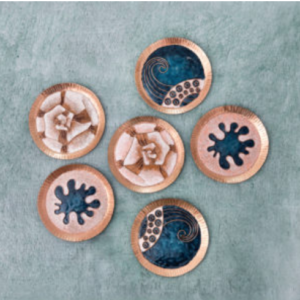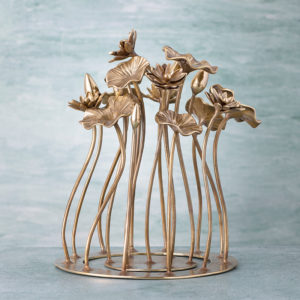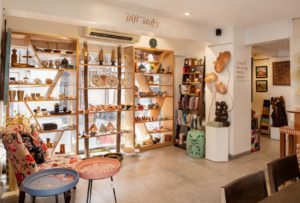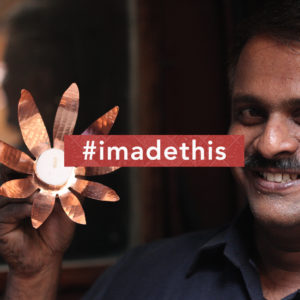As COVID takes a toll on the world’s economy and industries, the focus is slowly shifting to handmade, sustainable local craft traditions as people make a bid to go back to the roots. Designers, NGOs and retail stores working with Indians craft traditions, besides skilled mastercraftsmen and artisans are attempting to revitalize the traditions for the modern world.
As I sat one afternoon, wondering about how the COVID pandemic situation was going to affect my business (Baaya), an epiphany struck me. I was not alone in this situation. The entire world was affected and it would be a good idea to understand what others in the industry were doing. On an impulse, I set up a WhatsApp group of about 40 designers and architects who were from this industry.
I was somewhat apprehensive that yet another WhatsApp group would be called out by those in the handmade and craft industry. But, in no time, something incredible happened—the group grew spontaneously to over 250 members. Architects, interior and craft designers, not for profits and members from corporate houses, all joined the group to share similar concerns and collaborate on ideas about what we can do collectively. It was as if those in the handmade and craft industry were waiting for an initiative like this.
Lotus Baaya
The handmade and craft industry is purportedly the second largest employment generator in India, after agriculture. Yet, it has been overlooked, time and again, and dismissed as an unstructured industry. In recent years, the industry has suffered a setback after demonetization and the GST exercise. This, followed by the crisis sparked by the COVID pandemic has left artisans, craftsmen, designers, retailers and everyone involved in the industry shaken to the core. There is widespread concern that these 200 million estimated artisans will face mass closure and so would the entire ecosystem, including designers who work with these artisans.
Baaya Store
The group has come together at this moment of crisis. It has taken a life of its own. What began on April 21, 2020, as a short-term group to reflect on issues and ways to tackle them, can now be termed as a movement to help the industry. We have walked a long path and are now a registered NGO, with several exciting projects on the anvil. The energy has been infectious. Over 100 core volunteers are working to create various synergies. Four groups have been created to look at this issue in all possible ways:
- The Design Group: They have worked on several initiatives, among them Market and Design linkages for 3H (Home, Hygiene, Health) products that will have high demand during and post the COVID crisis; Design challenge to create open-source design work for anyone to take forward, and Market research on trends to share with the community.
- The Campaign Group has worked on creating a social media push for the handicrafts industry and members of HFH. They have also helped establish an identity design for HFH and targeted market campaign, conducted webinars for different groups—architectural and interior design, the voice of artisans from remote areas and young voices, production and supply issues. They are now working on creating a website. In 2021 several targeted campaigns will span innovative use of craft, use of the design in the handmade industry and a focus on the next generation of artisans from the families of craftsmen.
- The Repository Group is putting together a database of artisans, designers, producer groups, NGOs, Craft institutes etc. with the view of sharing data and connections.
- Craft Education & Advocacy group is attempting to engage with design schools and architectural schools to push cultural education in the curriculum. This much-needed initiative is very important to engage the next generation to grow up with an appreciation of our culture and heritage skills.
- Our recent venture is e-commerce, where we will put the work of artisans on sale in collaboration with a major e-comm website, which focuses on handmade, but more of that later as it evolves.
- There is a group working on collaborating with big-ticket cultural, art and literary events on behalf of our artisan and designer members, and hosting our events eventually.
- One of our groups has hosted masterclasses that range from how to price your products right to how to photograph them for more eyeballs and sale for artisans and craftsmen.
The group has already led to several positive spin-offs. Cross-selling opportunities and technical and marketing platforms offering help are some. Ashok Chatterjee, Ex-Director, NID and Advisor to Crafts Council of India and Jaya Jaitley, Founder Dastkaari Haat have been involved as mentors in this project so far.
There is a strong belief that Hand for Handmade will be an association that lasts because everyone is committed to creating long term impact. AHFH will remain dedicated to creating bigger and better markets for craft and handmade in India and globally through design and market interventions.
Craft goods must be purchased not out of a sense of pity for artisans, but because crafts are uniquely beautiful, organic, sustainable way to create beauty in our lives, homes and spaces. This objective can only be met when craft and design knowledge come together to create a vibrant industry that meets the needs of our customers. We must do this, because, in the absence of collective effort, our wonderful and diverse skills may not exist for our children to enjoy and experience.
(Shibani Dasgupta, Founder & CEO of Baaya and founder of the Hand for Handmade movement in India writes on how the movement came into being.)

